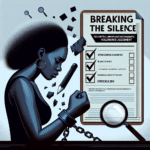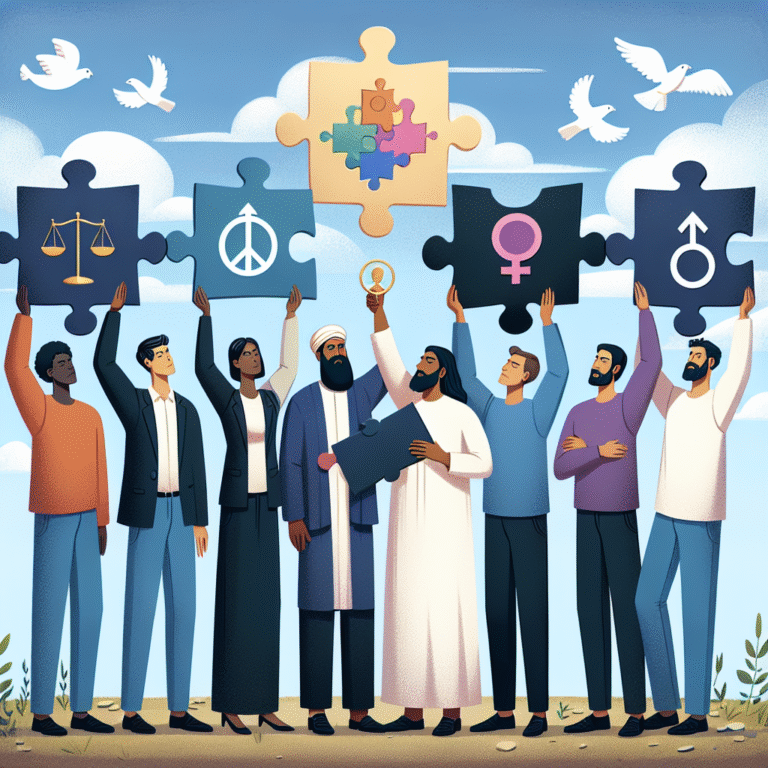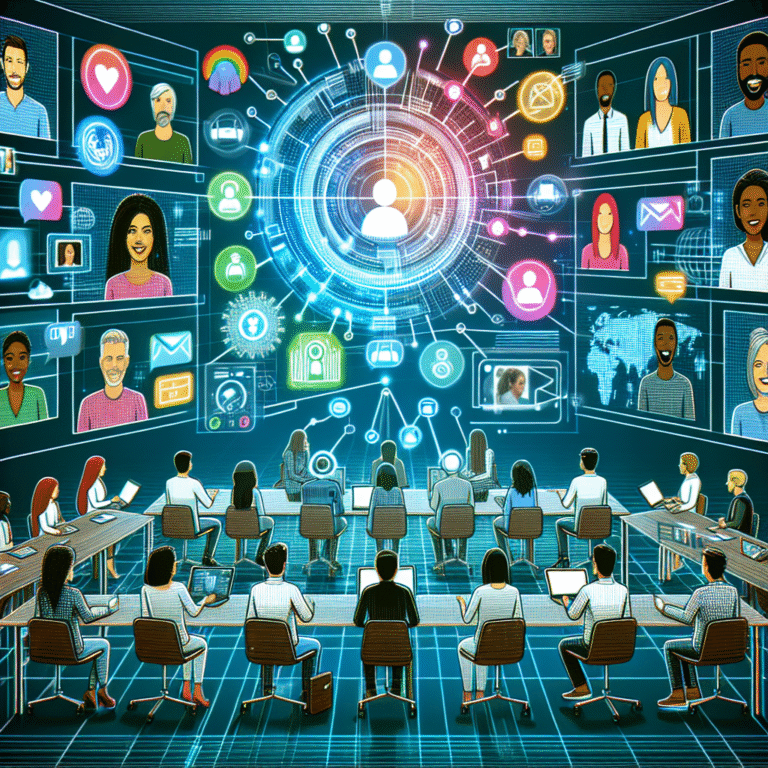
Introduction
Living outside the box isn’t just a catchy phrase; it’s a necessary call to honor and embrace the diverse spectrum of gender identities, particularly that of non-binary individuals. For so long, society has relegated gender to a strict binary of male and female, but emerging voices are challenging this notion with authenticity and strength. Today, we’re diving into “Living Outside the Box: A Day in the Life of Non-Binary Individuals,” shared through stories, experiences, and daily routines.
This exploration aims to shed light on the unique challenges and joys that comprise a non-binary person’s life, revealing insights and experiences that resonate deeply within and beyond the queer community. Whether you’re a part of the LGBTQ+ spectrum or an ally aiming to understand better, the day-to-day reality of non-binary existence offers powerful lessons that can inspire us all.
Understanding Non-Binary Identity
What Does Non-Binary Mean?
Non-binary is an umbrella term that captures individuals who do not identify exclusively as male or female. This expansive identity may include genderqueer, genderfluid, agender, and other expressions of gender that exist outside of traditional binaries. Living outside the box means viewing gender as a complex spectrum rather than a fixed dichotomy.
Challenging perceptions begins with understanding them, and acknowledging the social norms tied to gender is crucial. Interviews and studies reveal that non-binary individuals often experience both internal and societal conflicts that can affect their mental health and overall well-being.
The Importance of Visibility
Increasing visibility of non-binary identities is urgent in combating stereotypes and misconceptions. Events such as Pride parades and public forums are essential, but daily acts of authenticity in non-binary lives make a more profound impact. These can range from advocacy and education to simply living openly as who they are.
A Day in the Life
Morning Routine: Self-Affirmation and Preparation
Most non-binary individuals start their day with self-care and affirmations. This time can include self-reflection, meditation, or simply embracing their chosen identity.
Case Study: Jamie’s Morning
Jamie identifies as genderfluid and prefers a combination of masculine and feminine styles. Their morning routine includes:
- Affirmation Exercises: Jamie spends a few minutes affirming their identity through positive statements. This ritual is crucial for mental health and self-acceptance.
- Personal Style Selection: Unlike a traditional binary approach, Jamie’s clothing choice reflects their mood and identity for the day, often leading to mixed styles.
This routine sets a tone of empowerment that resonates throughout their day.
Work and Professional Life
Navigating the workplace can be a daunting task for non-binary individuals due to potential biases and discrimination. While some workplaces are becoming more inclusive, many non-binary people still encounter challenges.
Case Study: Alex’s Workplace Experience
Alex works in a tech company that recently implemented gender-neutral bathroom policies and encouraged employees to share their pronouns.
- Daily Challenges: Despite a supportive environment, Alex sometimes faces confusion or awkwardness regarding their pronouns.
- Advocacy: They’ve taken on the role of educating their colleagues about non-binary identities, which fosters a more inclusive workplace culture.
This case mirrors broader themes within workplaces and highlights the critical need for training and awareness initiatives to dismantle bias.
Social Interactions: Navigating Relationships
Maintaining relationships while identifying outside the binary can be a complex and shifting journey. Non-binary individuals often cultivate supportive networks that foster understanding and acceptance.
Case Study: Sam’s Social Circle
Sam has curated a close-knit group of friends who respect each other’s identities.
- Navigating Misunderstandings: When friends misgender Sam, they use it as a moment to educate rather than react negatively.
- Community Building: Social interactions thrive in affirming spaces, where norms are shared, educating circles foster greater acceptance.
Creating safe spaces not only helps affirm identities but empowers individuals and communities.
Evening Wind-Down: Reflect and Recharge
After a day of experiences that often involve navigating societal structures and interpersonal interactions, evenings serve as a time for reflection and self-care.
Case Study: Taylor’s Evening Routine
Taylor engages in practices that help unwind and reflect on their day:
- Journaling: Taylor spends time journaling, documenting thoughts on identity, challenges faced, and victories achieved, providing an emotional outlet.
- Community Engagement: Often, they wind down by reading articles or social media posts about the non-binary community, which reinforces their sense of belonging.
Evening routines that include self-reflection and community engagement help individuals maintain a healthy relationship with their identity.
The Impact of Language and Pronouns
Importance of Language
Language plays a critical role in validating non-binary identities. How people communicate one’s name and pronouns deeply affects their sense of self and belonging.
Case Study: The Power of Pronouns
A study highlighted in the Journal of Adolescent Health revealed that non-binary youth who had their pronouns respected reported significantly lower levels of depression and anxiety. Ensuring proper use of pronouns—such as “they/them” or “ze/hir”—is not just an act of respect; it’s a lifeline to mental well-being and community support.
Building Inclusive Environments
Incorporating non-binary language into everyday interactions transforms environments, making them more welcoming. For organizations and schools, implementing gender-neutral policies promotes a culture of respect and acceptance.
Challenges Faced
Mental Health Struggles
Mental health is a critical concern for many non-binary individuals, driven largely by societal rejection, bullying, and lack of understanding.
Discrimination and Bias
Many non-binary individuals report facing discrimination in various spheres, whether personal or professional.
Case Study: Morgan’s Experience with Discrimination
Morgan applied for a job that required candidates to adhere to strict dress codes based on gender. When they interviewed in a non-binary outfit, they were met with disapproving looks and comments.
- Resilience: Rather than seeing this as a failure, Morgan used it as fuel for advocating inclusion in hiring processes.
Highlighting such stories invites conversations on the need for policy changes and education on gender diversity.
Achieving Acceptance
Creating Allyship
Allyship is crucial in the journey toward acceptance. Allies can amplify non-binary voices while actively working to dismantle the systems of privilege and rejection.
Case Study: The Role of Allies
Katie, a cisgender friend of Jamie, actively addresses misunderstanding and biases about non-binary identities within their social circles. She incorporates gender-inclusive language in conversations and routinely educates others about the pronoun importance.
Tools and Resources
Here are several resources and tools that non-binary individuals and their allies can utilize:
| Resource | Description |
|---|---|
| Nonbinary.org | Offers information and resources for non-binary inclusivity. |
| The Trevor Project | Provides crisis intervention and suicide prevention services for LGBTQ+ youth. |
| Gender Spectrum | Aims to create gender-sensitive environments for children and youth. |
Conclusion
Living outside the box is more than a personal journey for non-binary individuals; it’s a path that speaks to the wider society’s need for resilience, understanding, and change. Through the lens of personal stories, advocacy, and everyday experiences, we see that living authentically can inspire those around us.
As we follow the daily rhythms of non-binary lives and understand their unique challenges and triumphs, we must remember the power of pressing forward toward inclusivity. Let these insights motivate us to be better allies and advocates for all in our quest for a truly inclusive society.
FAQs
1. What does it mean to be non-binary?
Non-binary individuals do not identify as exclusively male or female. This identity can encompass a range of expressions, such as genderqueer, genderfluid, and more.
2. How can I support non-binary friends?
Support can include using correct pronouns, listening without judgment, and educating others about non-binary identities to foster a more inclusive environment.
3. What challenges do non-binary individuals face?
Common challenges include misgendering, discrimination in workplaces, social rejection, and mental health struggles due to societal pressures.
4. Why is correct pronoun usage important?
Respecting pronouns fosters an environment of acceptance and validates an individual’s identity, essential for emotional and mental well-being.
5. What are some resources for non-binary individuals?
Several organizations, both online and offline, can provide support and information, including nonbinary.org and community centers focused on LGBTQ+ issues.
By embracing diversity and championing the rights of non-binary individuals, we can all learn to live outside the box, celebrating the unique tapestry of human experience that makes our world richer and more vibrant.

















